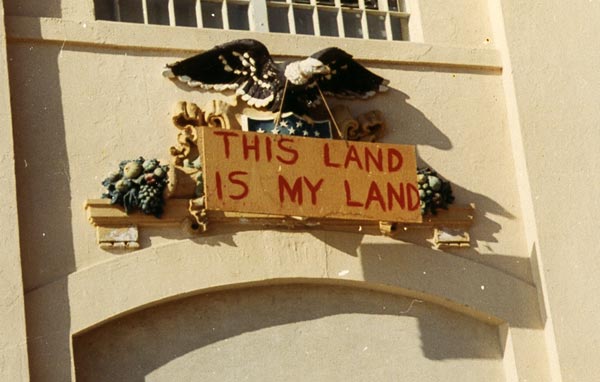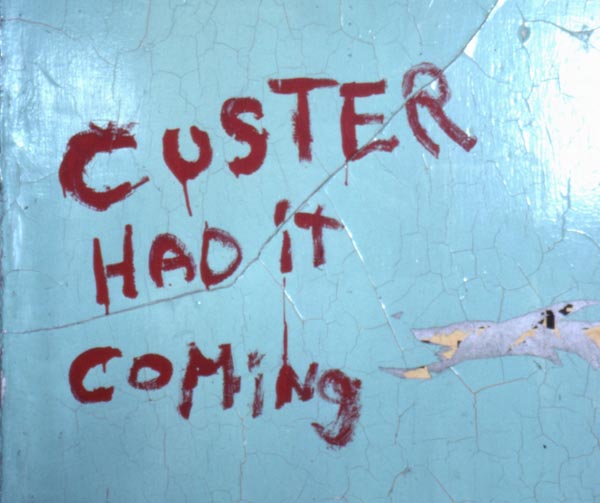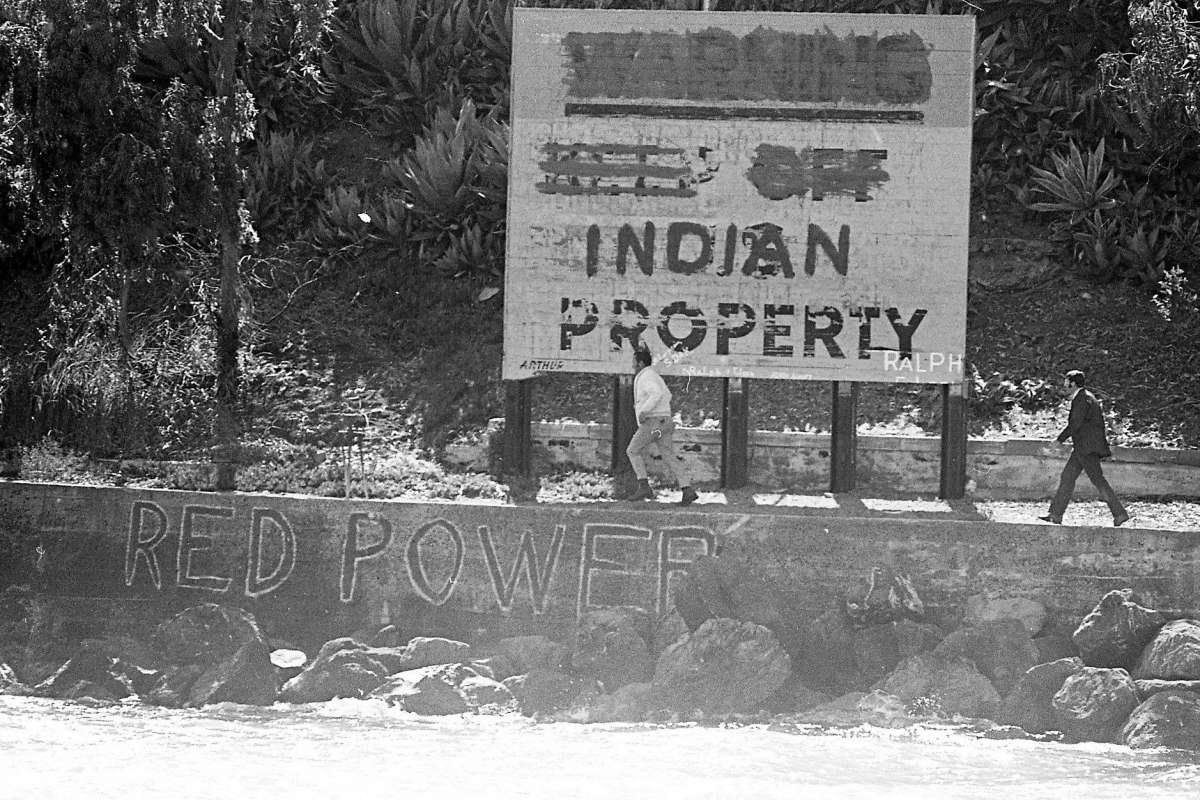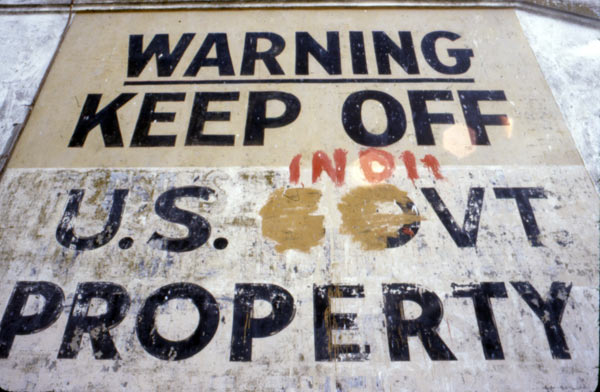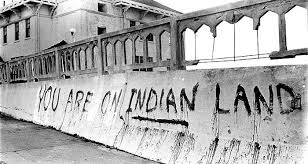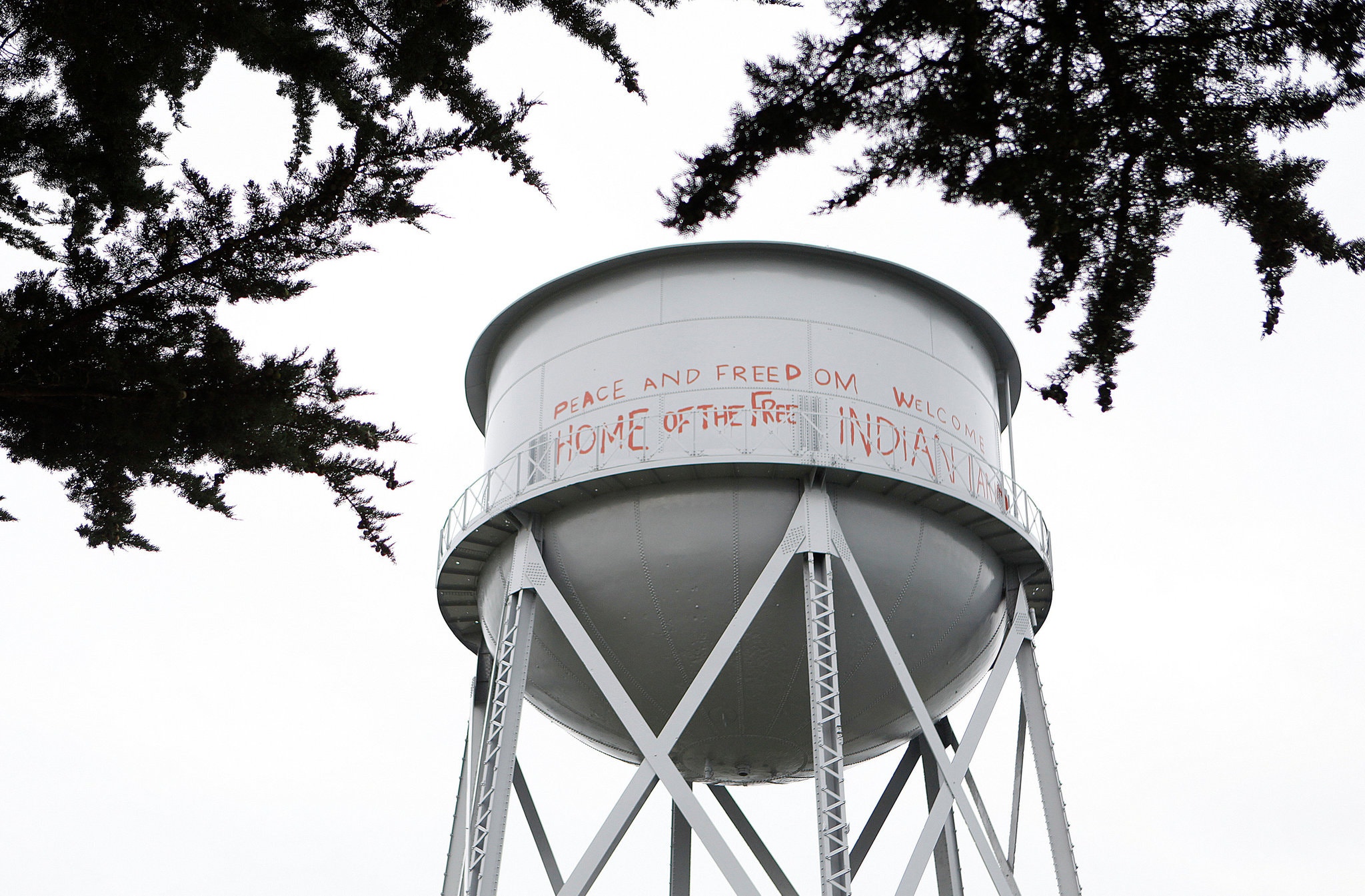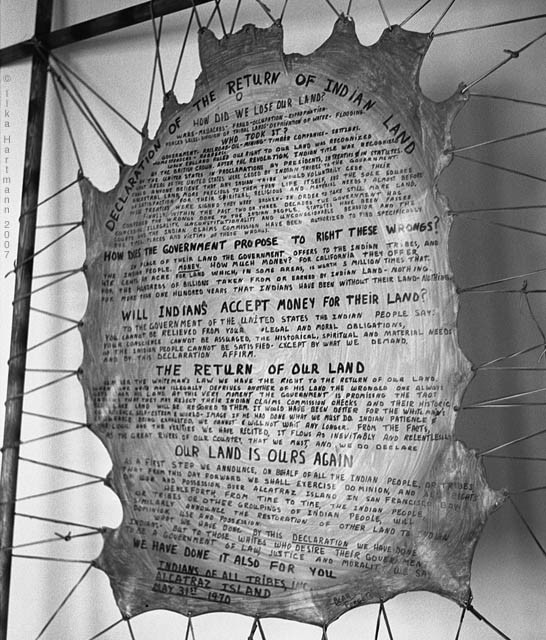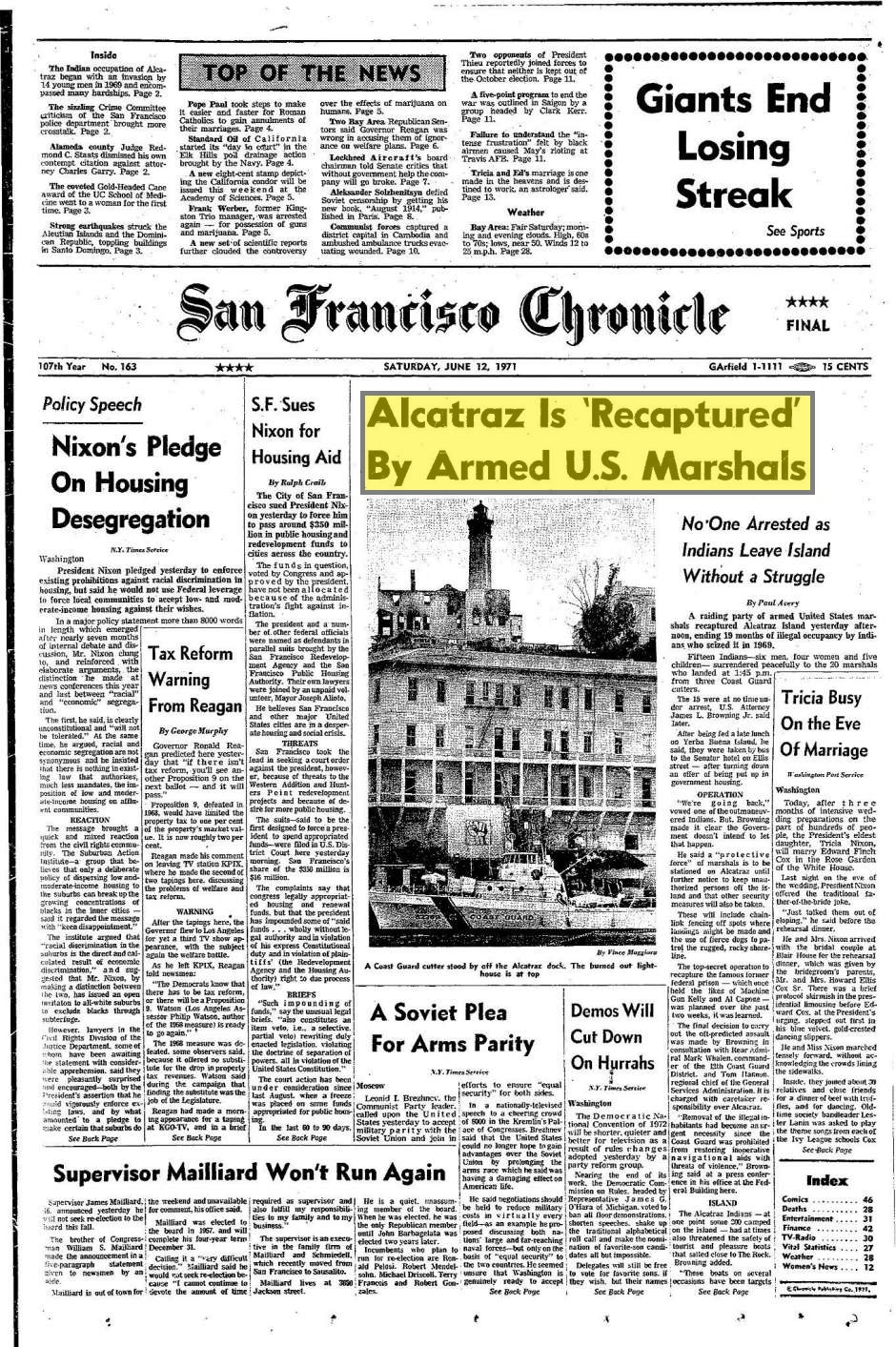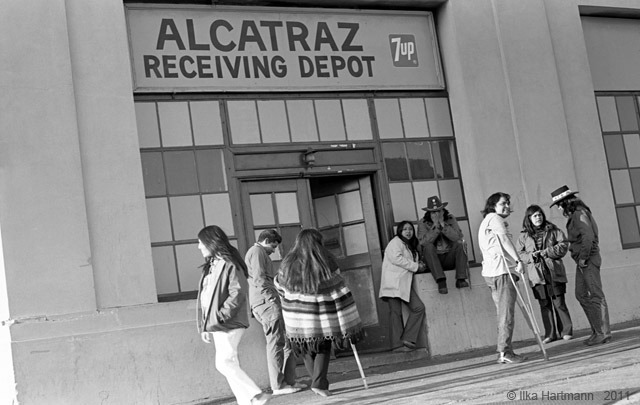Exactly 10 days later, Indians of All Tribes returned to Alcatraz, with 89 urban-college occupiers. This time however, they remained on the island. The media followed the developments closely, providing national exposure. The Indians garnered widespread support with donations of food and supplies. They also established an Indian school and a radio station. At the peak of the occupation 400-600 people stayed at Alcatraz.
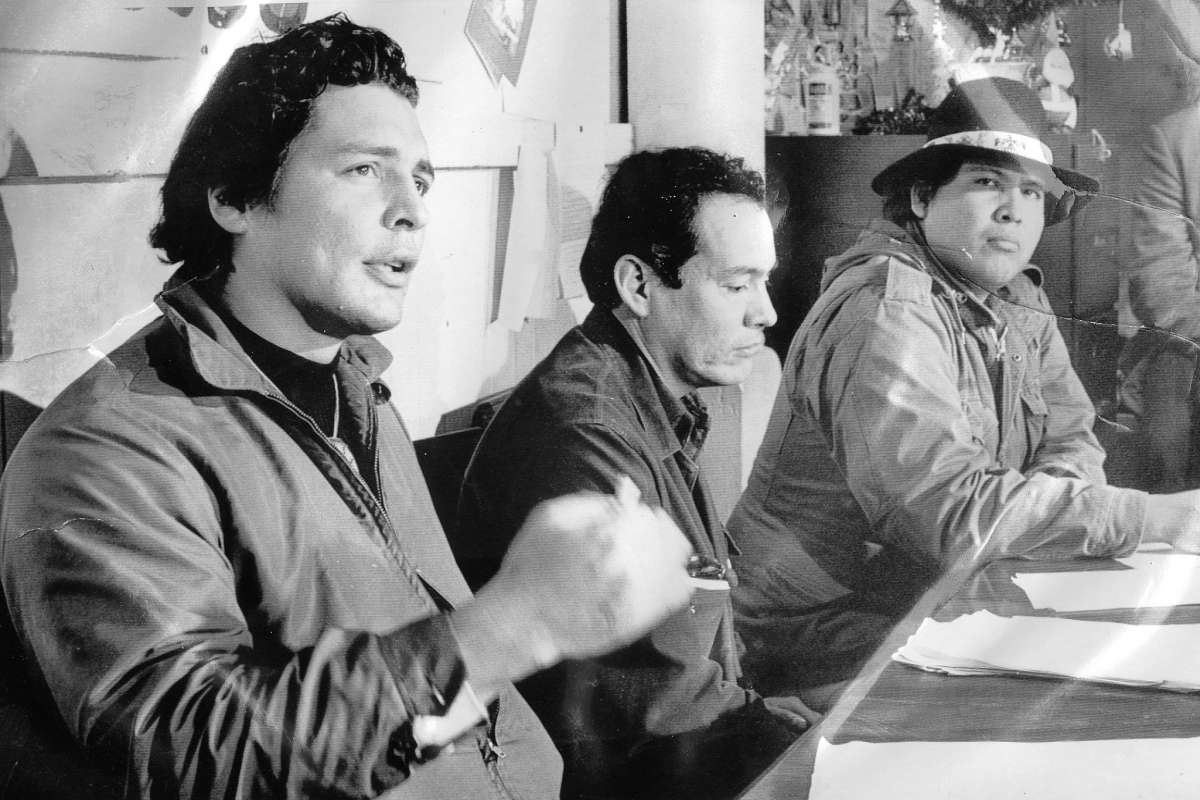
Richard Oakes (left) holds a conference with the other leaders. (Source) San Francisco Chronicle
Radio brodcast from Alcatraz.
(Source) American Archive of Public Broadcasting (0:12)
"We hold the Rock"
~ Richard Oakes

